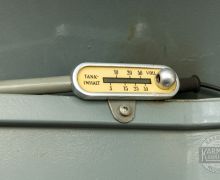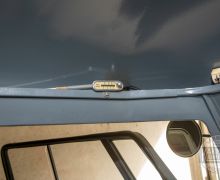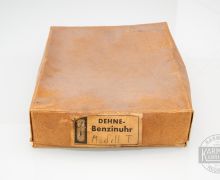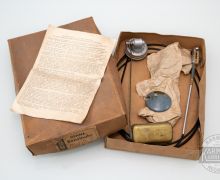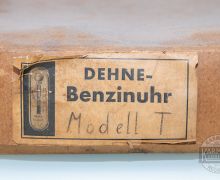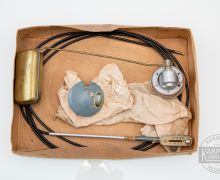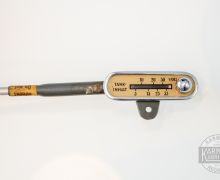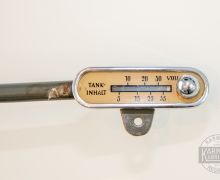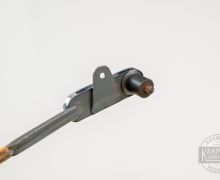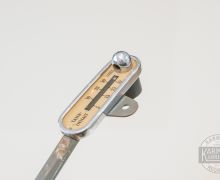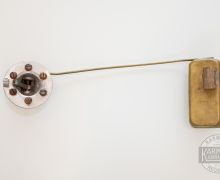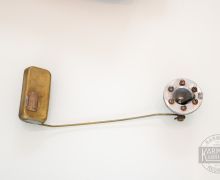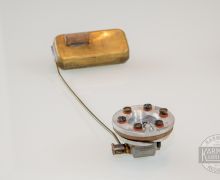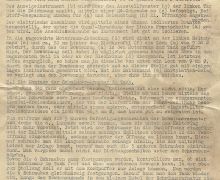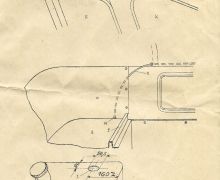RAREST OF THE RARE
Barndoor Dehne fuel gauge
Wild times! Picture yourself in the early 1950s. Here you are driving your spartan VW Bus on the Autobahn at a top speed of 80 km/h, until suddenly the engine starts to stutter due to a lack of fuel. The Beetle offered a simple solution: the fuel tap in the footwell could conveniently be set to reserve. But the Bus’ fuel tap was installed in the engine compartment right under the tank. So, you had to stop on the side of the road, get out and open the engine lid to turn the fuel tap. With the traffic conditions, this could become dangerous. At the time, Volkswagen did not offer a fuel gauge on its vehicles. Only a wooden fuel dipstick allowed you to gauge the approximate range.
Fortunately, the aftermarket industry began offering fuel gauges for all Volkswagen models using a variety of designs. The Dehne company developed the “Model T” (the “T” likely stands for “Transporter” or “T1”) fuel gauge, which is very rare today, especially for early VW Buses. Since the display worked mechanically via a long cable, it was initially impossible to install the fuel gauge in the dashboard. The problem was the very long travel from the tank to the front of the vehicle, plus too many turns. For these reasons, the fuel gauge was mounted on the top left, above the driver's door, with a self-tapping screw. The cable laid on the inner sheet metal channel and dived down into the engine compartment in the rear of the vehicle. The mechanical sending unit mounted in the tank controlled the fuel gauge. A wire connected to the light switch activates the Dehne’s light in the dark. You can see the kit here with the fuel gauge, installation instructions and original packaging. In contrast to the well-known vertically mounted Beetle Dehne fuel gauge, the lettering “Tankinhalt” was written horizontally on the T version. Furthermore, the “Model T” gauge can be recognized thanks to the bracket mounted in the back. Starting in July 1961, the Buses received an electric fuel gauge as standard equipment from the VW factory.
